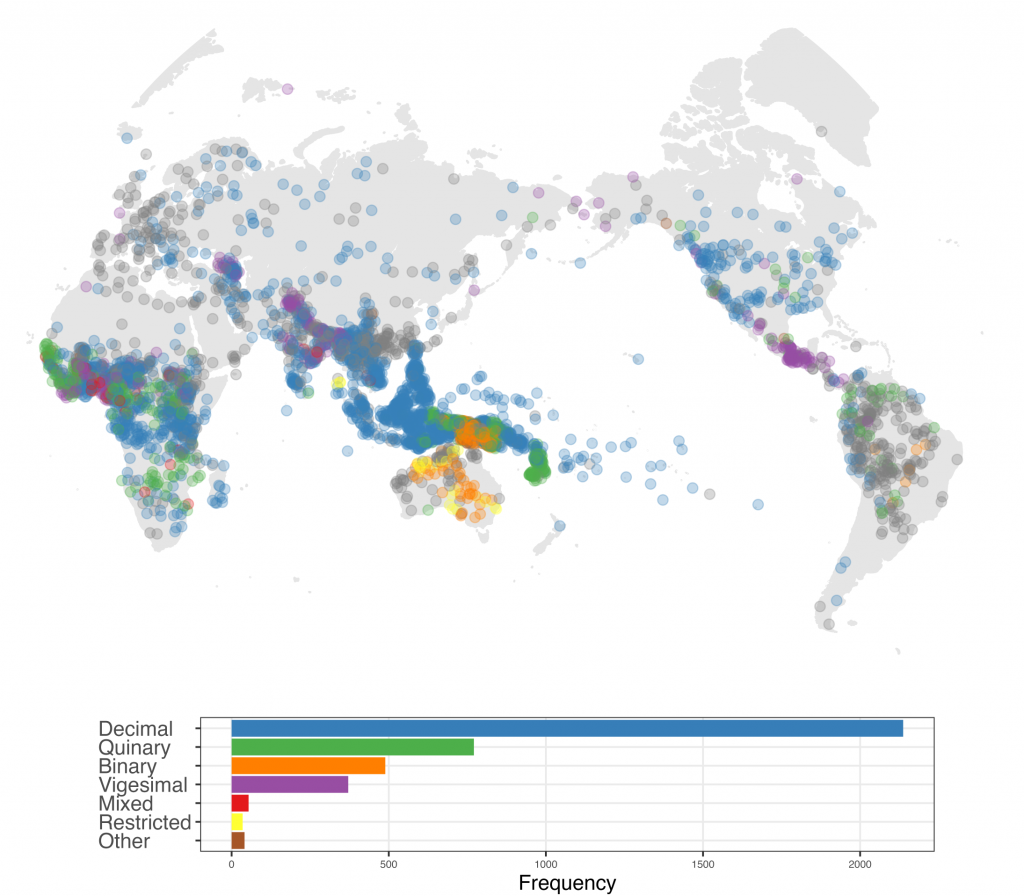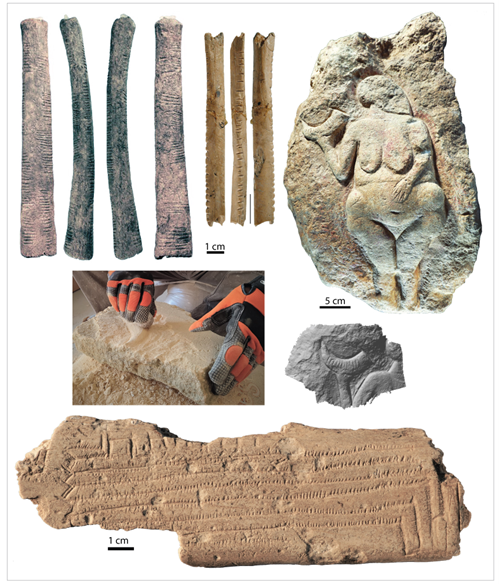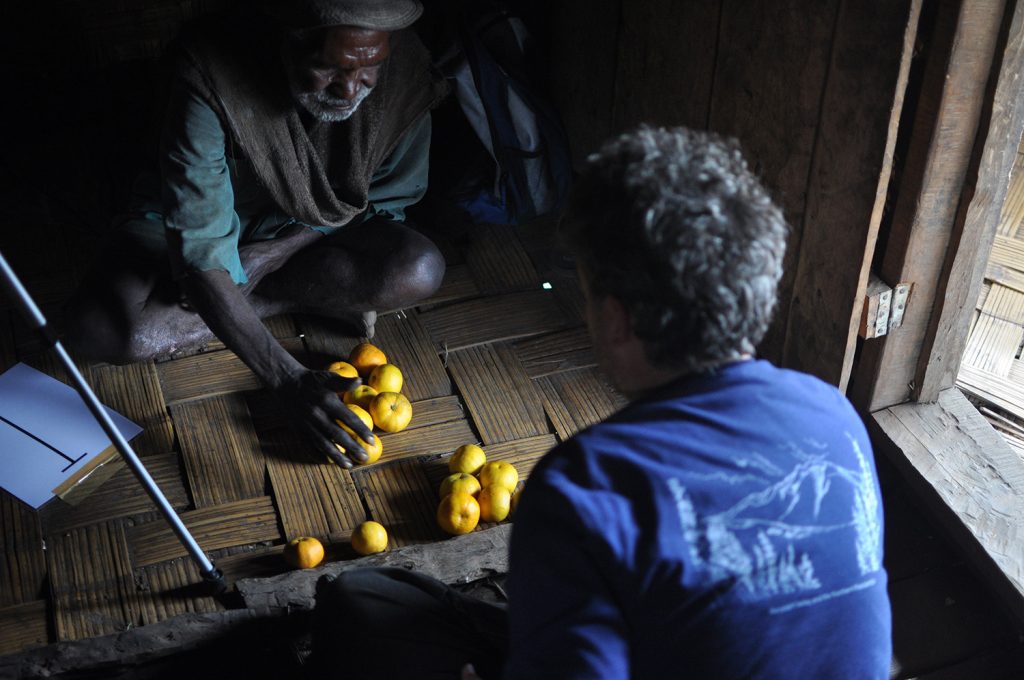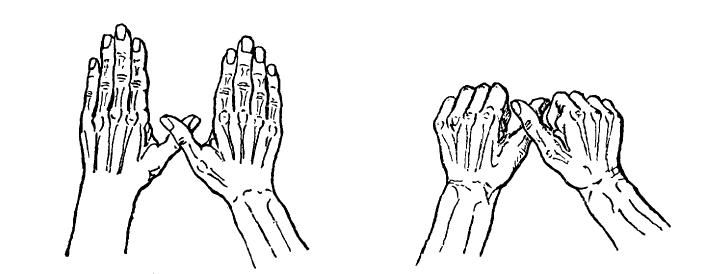The ERC Synergy Project “The Evolution of Cognitive Tools for Quantification” (QUANTA) studies the origin and diversification of quantification in different human cultures. Its interdisciplinary approach integrates data and methods from anthropology, archaeology, cognitive science, and linguistics.
QUANTA brings together four leading PIs with unique and complementary expertise. Together with their team of researchers and collaborators they study the questions of when, why, and how numeral tools emerged.
Max Planck Institute for Evolutionary Anthropology (MPI EVA), Leipzig, Germany

PI: Professor Russell Gray
At the Department of Linguistic and Cultural Evolution (DLCE) in Leipzig, the QUANTA group focuses on the origin and evolution of linguistic systems for expressing quantity. Professor Russell Gray and his team examines numeral systems of the world’s languages to account for their diversity, both by collecting original fieldwork data as well as by analyzing it with state-of-the-art computational methods such as Bayesian phylolinguistics. Ongoing work includes global studies such as the generation and analysis of the Numeralbank database, as well as area, family, and modality specific studies.
The French National Centre for Scientific Research (CNRS), Bordeaux, France

PI: Professor Francesco d’Errico
In Bordeaux, Professor Francesco d’Errico and his team at the PACEA lab aim to bring archaeological insights into the emergence of cognitive tools for quantification. Access to the early stages of evolution of these systems is a key issue. However, most cognitive tools of quantification leave no traces of themselves in the archaeological record. This is obvious for verbal and bodily systems, but even material systems are, for the earliest periods, rare and of controversial interpretation. It has been proposed that such tools already existed in the Palaeolithic and took the form of sequentially marked artefacts. The Bordeaux team focuses its research on the analysis of these objects, and other archaeological remains, representing the earliest possible devices conceived to store and retrieve numerical information. Such an analysis requires the implementation of analytical methodologies to differentiate early recording systems from other elements of past material culture, as well as the refinement of theoretical approaches to characterize the former and explore their implications for the synchronous development of other cognitive tools for quantification that have left no traces in the archaeological record.
Eidgenössische Technische Hochschule Zürich (ETH), Zürich, Switzerland
PI: Professor Rafael Núñez

At the ETH Zürich, Professor Rafael Núñez and his team investigates the nature and foundations of mathematics by means of multidisciplinary methods in the cognitive sciences. As part of this endeavor, one of the goals is to understand the bio-cultural phenomena that made the emergence and evolution of quantification, number, and arithmetic possible. In the context of QUANTA, the team focuses on two main complementary lines of research. On the one hand, the team studies specific situations in the history of humanity that led to the creation of “number” — i.e., exact symbolic quantification. On the other hand, it studies —via ethnographies, linguistic analysis, and field experiments— some of the many non-industrialized remote groups who speak languages with reduced numeral vocabulary. These groups, who may have not felt the need to develop exact quantification and that deployed other strategies for handling quantity, are found mainly in the Amazon and in Australia. Collectively, the findings of these studies inform, and are informed by, the outcomes produced by the other QUANTA teams.
University of Bergen (UiB), Bergen, Norway
PI: Professor Andrea Bender
At the University of Bergen, Professor Andrea Bender has assembled a team with background in anthropology, archaeology, biology, cognitive science, philosophy, and psychology. Addressing the need for conceptual clarity regarding what numbers are and how they should be analyzed, this team works on paving the ground for fruitful discussion between and integration of the different strands of the project. The team develops a conceptual grid for describing and analyzing all numeral systems alike — regardless of their mode of representation (e.g., verbally, body-based, or by artifacts) — in terms of their cognitive properties and implications. Aligning different types of systems across such modal discontinuity is required for bridging the massive gap between the prehistoric past and the present. And understanding how specific system properties interact with cognitive processing will enable us to understand whether and how a tool would have co-evolved with cultural features. Major ongoing work includes a systematization of body-based numeral systems, attempts to identify potential driving forces in system evolution, and synergetic case-studies across teams for testing the integrative power of our approach.

